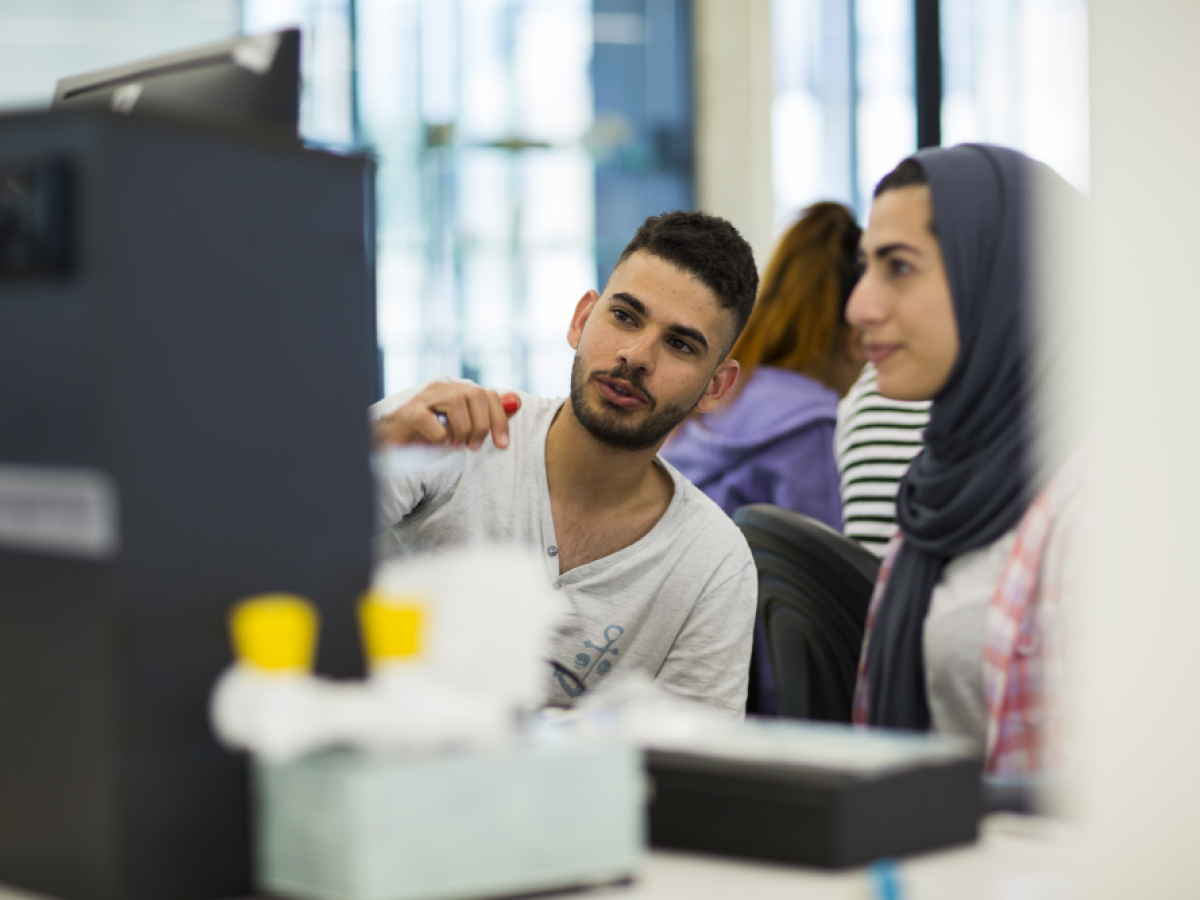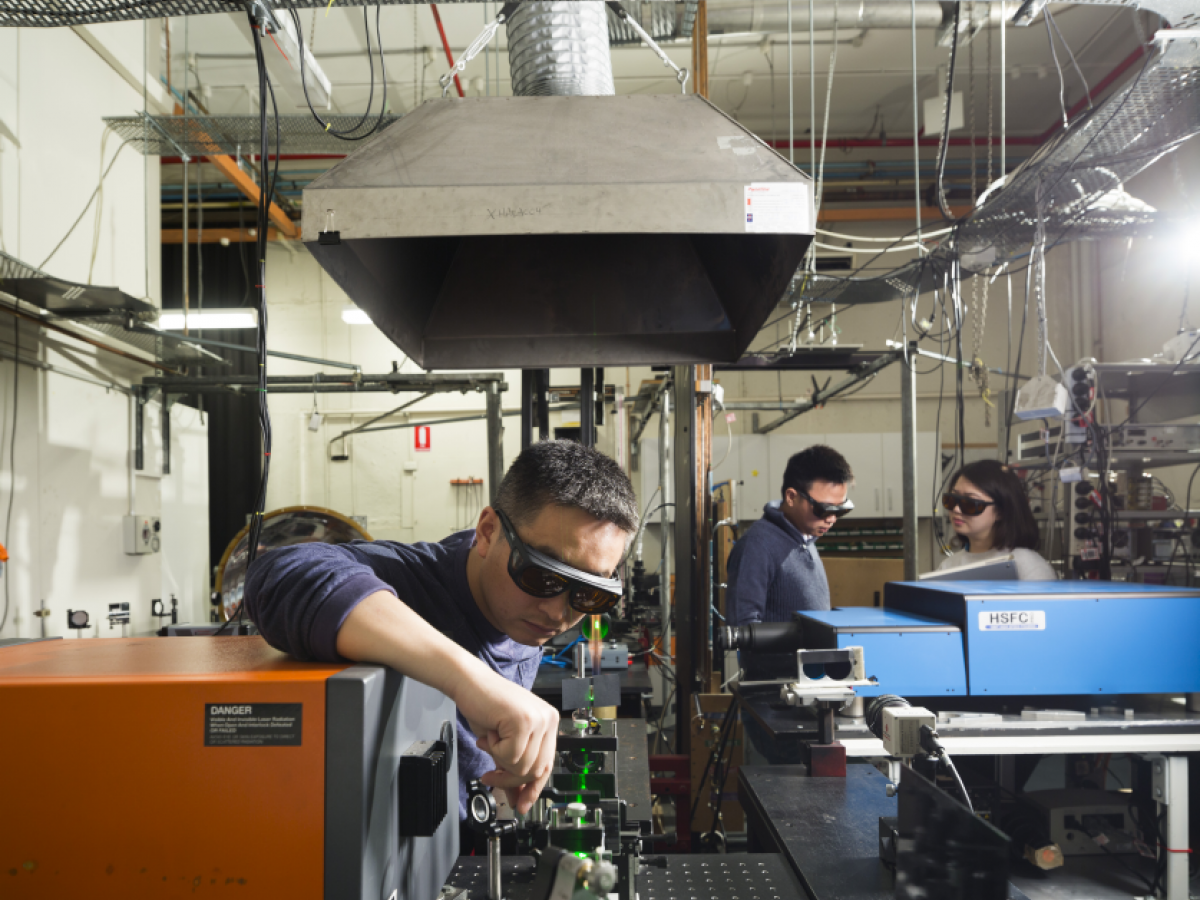Low Energy Technologies
A consistent rise in atmospheric CO2 concentrations has underpinned significant societal and scientific concern due to its direct role in causing potentially catastrophic climate change.
A project team supported by the Environment Institute at the University of Adelaide.

Energy Evolution
A major source of increases in anthropogenic CO2 is from the combustion of fossil fuels, thus a transition to renewable energy sources is critical to the future energy landscape. Net-zero emissions and an ultimate clean energy future will rely on technological solutions for energy distribution (storage and transport) and utilisation, and more energy-efficient technologies in health and agriculture. Developing novel Low Energy Technologies is crucial for meeting environmental challenges.

Responding to the Energy Challenge
The Centre of Advanced Nanomaterials is responding to the challenge of developing Low Energy Technologies. We are researching nanomaterials technologies and integration that underpins Chemical Energy Storage; Energy Waste Management; and Heterogeneous Catalysis to produce green chemical feedstocks from chemical waste.
Major projects include:
-
Catalysts for CO2 conversion and utilisation
The conversion of CO2 into useful chemical products is a long-standing challenge. Although an attractive source of carbon, CO2 is considered too thermodynamically and kinetically stable for industrial use. However, new developments in the field of catalysis have made the hydrogenation of CO2 to methanol economically feasible.
Methanol is a versatile chemical that can be used directly as a fuel or as a chemical building block for more complex molecules that are necessary to make everyday products such as adhesives, silicone and foams. The Centre for Advanced Nanomaterials is partnering with chemical companies to develop new nano-structured catalysts to make the conversion of CO2 to methanol more efficient and commercially viable. Using CO2 as a feedstock makes a positive impact on the global carbon cycle, and moreover, it is an attractive carbon source as it is a non-toxic, renewable resource that is both inexpensive and abundant.
-
H2 Distribution Solutions
Hydrogen is poised to play a major role in the transition to a low carbon economy by replacing fossil fuels as a primary energy source. To deliver hydrogen at competitive prices to natural gas and coal several technological challenges need to be overcome. One of these is enhancing the storage efficiency of hydrogen gas for transport and distribution.
The Centre for Advanced Nanomaterials is developing novel nanoporous materials and their composites that can store hydrogen at lower pressures and higher temperatures than current systems. This will allow for the safe and efficient commercial deployment of hydrogen storage at multiple a range of scales.
-
New membrane technologies
Membrane separation technologies are highly advantageous and can provide energy savings of up to 50 % compared with alternative technologies. The Centre for Advanced Nanomaterials has had a long-term focus on new nanoporous materials for separation of gas mixtures, including CO2/CH4 and CO2/N2. Combining these nanoporous materials with industry-standard polymer membranes has led to the emergence of new mixed matrix membranes with improved operating parameters.
To achieve efficient conversion of CO2 into green methanol, we are also developing hybrid membrane technology that combines polymer membranes with bespoke catalysts for these conversions. The outcome will be technology which enables future fuels to be produced, enabling industries to convert their CO2 wastes into a valuable energy product or feedstock. The combination of a catalytic reactor with membrane separation provides for process intensification to reduce the capital cost.
-
Nanomaterial “Cold Chain” Technologies
Vaccines and biomolecule-based pharmaceuticals are critical to the future health of Australia’s population. Although virus-based vaccines are being developed for an increasing number of illnesses and infectious diseases, their stability represents a critical challenge. A similar challenge pertains to proteins and nucleic acid-based medicines. The term ‘cold-chain’ refers to the requirement that the vaccine or biologic must be transported at low temperatures to remain stable and in their active form.
This necessitates refrigeration, which poses significant logistical issues when transporting to remote areas. Our research group has developed a novel technology for the encapsulation and protection of biomacromolecules such as proteins, enzymes and DNA. Our approach encapsulates biomacromolecules in a protective coating within seconds in aqueous conditions at room temperature. Remarkably, these coatings protect biological materials from environments that typically lead to denaturation and inactivation.

Partnering for Low Energy Technology Solutions
The future of the environment is dependent on the nature of our ongoing relationship with energy. The Centre of Advanced Nanomaterials can offer research and support for the design, synthesis, and applications of porous materials.
-
List of experts
Area of expertise
- Material Synthesis
- Gas adsorption
- Cataylsis
Researcher
Professor Christian Doonan
Director, Centre of Advanced NanomaterialsArea of expertise
- Material Synthesis
- X-ray Diffraction
- Cataylsis
Researcher
Professor Chris Sumby
Deputy Director, Centre of Advanced Nanomaterials
Contact us
Would you like to discuss working with the Low energy technologies team?
Contact: Professor Christian Doonan
Theme Lead – Low Energy Technologies
Department of Chemistry
School of Physical Sciences
The University of Adelaide SA 5005 Australia
E: christian.doonan@adelaide.edu.au
T: +61 8 8313 5770
